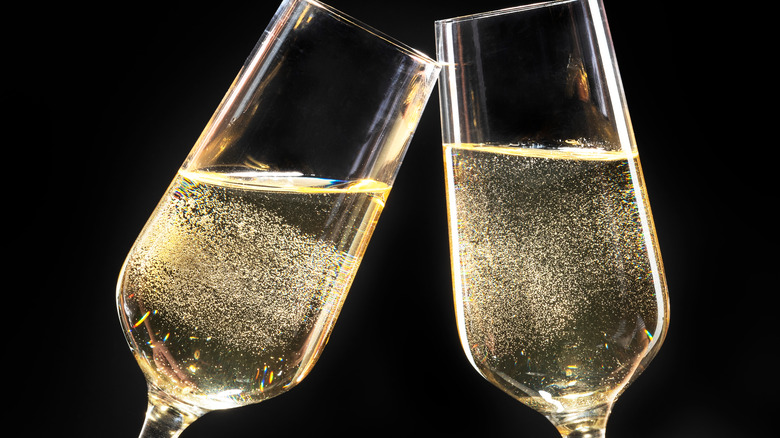What Makes Frizzante Different From Other Sparkling Wines
Not everyone is into the fizz of sparkling wines. For many drinkers, the carbonation of a fine Champagne or a spirited prosecco is just a little too strong. At the same time, however, there is very little that can match its vivacity and refreshing qualities. Fortunately, for the sparkle averse, there is a middle ground that strikes just the right balance of fizz and flavor. It's called frizzante, or semi-sparkling wine.
Frizzante and spumante are the two main categories of Italian sparkling wine. Spumante wines are known for being very forward on the sparkling front and tending to have bolder, more complex flavors. Frizzante, on the other hand, offers something equally flavorful, but without all the overwhelming bubbles. These wines are far less common, with Consorzio di Tutela del Prosecco DOC, via Martha Stewart, stating that only about 23% of proseccos are frizzante, compared to 76% for spumante.
Frizzante wines are much easier for casual, everyday drinking, and tend to be served in carafes as a starting wine to prepare the palate for a meal. At this point, you may be wondering how exactly you can control how much carbonation goes into the wine. It has everything to do with the carbon dioxide levels the winemakers play with during fermentation and bottling, and the atmospheric pressure that results from it.
The science of fizz strength
Sparkling wine strength is judged on a bar scale, which is a metric measurement of atmospheric pressure. In imperial terms, we're looking at pounds per square inch, or psi. Standard, spumante wines measure at 5 to 6 bars, or 73 to 90 psi. Hence why they have such a characteristic "pop" when you remove the cork. Frizzante wines are far lower at just 1 to 2.5 bars, or 14 to 37 psi. This garners a far more mellow and subtle bubble.
These numbers are achieved during the secondary fermentation process. Like other sparkling wines, spumante and frizzante wines are subjected to a secondary fermentation, in which yeast and sugars are introduced to the liquid and sealed in a stainless steel tank to create carbon dioxide. The length of time in which the CO2 is trapped inside the tank will determine the bar strength of the wine. Frizzante takes about a month, while spumante takes about 40 days.
Frizzante can encompass multiple sparkling wines, such as prosecco or Moscato d'Asti. These wines pair well with lighter fare, such as seafood, salads, and soups. It also offers a refreshing crispness to traditionally salty Italian salumis and cheeses. So if you are not huge on traditional sparkling wines, see if you can't track down a frizzante the next time you're out wine shopping.

